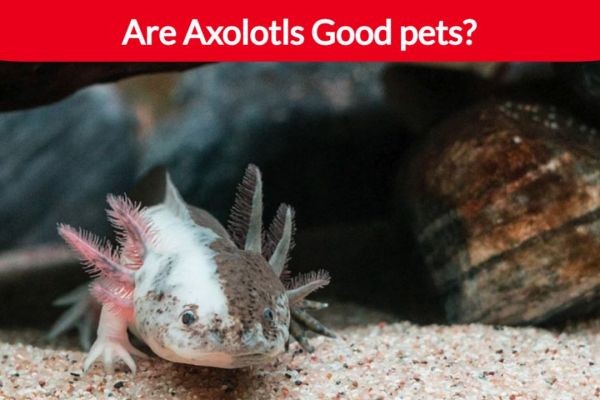Navigating the wild with Komodo dragons requires expert guidance and strict safety measures—discover essential tips to ensure a thrilling yet secure adventure.
08/13/24 • 105 Views
When observing Komodo dragons in the wild, prioritize safety and respect. These apex predators, up to 3 meters long, inhabit Komodo National Park. Always choose an authorized guide who prioritizes safety and has extensive knowledge of dragon behavior and regulations. Maintain a distance of at least 5 meters, as their saliva contains dangerous bacteria. Recognize warning signs—hissing, raised heads, and tail swaying indicate aggression. Follow the 'leave no trace' principle to minimize human disturbance. Never touch or feed the dragons to prevent aggressive responses from these fascinating creatures. Discover more detailed precautions and insights for a safe experience.
Key Takeaways
- Always maintain a distance of at least 5 meters from Komodo dragons to ensure safety.
- Follow the instructions of authorized guides, who prioritize visitor safety and wildlife protection.
- Recognize and respect warning signs such as hissing, throat puffing, and raised heads.
- Avoid feeding or touching the dragons to prevent aggressive behavior and ensure natural interactions.
- Adhere to 'leave no trace' principles by not littering and respecting the natural habitat and designated trails.
Understanding Komodo Dragons
Understanding Komodo dragons requires recognizing that these apex predators are the largest lizard species, capable of reaching lengths of up to 3 meters and weights of up to 150 kg. Exclusively found in Komodo National Park in Indonesia, these formidable reptiles inhabit an area that includes the islands of Komodo, Rinca, Flores, and Gili Motang. With a population of around 4,000 individuals, Komodo dragons are a significant part of the local ecosystem.
Their natural habitat consists of dry, open grasslands, savannas, and tropical forests at low elevations. These environments provide the necessary conditions for their survival, including access to prey such as deer, pigs, and smaller reptiles. Komodo dragons are solitary creatures, except during feeding and breeding times, which further underscores the importance of preserving their habitat to guarantee their continued existence in the wild.
As an endangered species, Komodo dragons benefit from strict conservation efforts. When observing them in the wild, it's essential to respect their space to avoid disturbing their natural behaviors. Following established safety protocols not only protects you but also contributes to the ongoing preservation of these remarkable animals in their natural habitat.
Choosing the Right Guide
When preparing to observe Komodo dragons in their natural habitat, selecting the right guide is essential to ensuring both safety and a rewarding experience. In Komodo National Park, your guide's expertise and adherence to safety protocols can make all the difference. First, make sure your guide is authorized by Komodo National Park. Authorized guides are trained to lead tours and interact with Komodo dragons, understanding their behavior and the park's regulations. This authorization is vital for your safety and the conservation of these majestic reptiles.
Second, look for guides who prioritize visitor safety and educate on responsible wildlife viewing practices. They should emphasize the importance of respecting the dragons' natural habitat and avoiding actions that could disturb or provoke the animals. Responsible viewing practices not only protect you but also contribute to the sustainable management of the park's ecosystem.
Third, select guides equipped with appropriate tools for protection.
- Long sticks: Used to maintain a safe distance.
- Extensive knowledge: Understanding dragon behavior.
- Safety protocols: Ensuring visitor safety.
These elements are essential for a safe and informative experience in the wild. By choosing the right guide, you can fully appreciate the wonders of Komodo National Park while ensuring both your safety and the preservation of this unique environment.
Maintaining a Safe Distance
Maintaining a safe distance from Komodo dragons, always at least 5 meters, is vital due to the dangerous bacteria in their saliva. These bacteria can cause severe infections if bitten. Komodo dragons are apex predators known to prey on animals such as wild boar, which underscores their strength and potential danger. Hence, following safety protocols is paramount for your protection.
When observing these creatures, it's important to keep your distance and avoid any actions that might provoke them. Guides are equipped with long sticks specifically designed to help maintain this safe distance and intervene if necessary. These tools aren't for harming the dragons but for ensuring human safety.
Always follow the instructions provided by your guide. They're trained to understand Komodo dragon behavior and will navigate the encounter to minimize risks. Never attempt to touch or feed the dragons, as this can trigger aggressive responses.
Recognizing Warning Signs
When observing Komodo dragons, it's important to recognize their warning signs to maintain safety. Look for specific body language indicators such as hissing, puffing up their throat, and raised heads, which signal aggression. Additionally, be aware that rapid tongue flicking and raised tails are clear signs of potential danger.
Body Language Indicators
Understanding a Komodo dragon's defensive body language is essential for ensuring your safety while observing these magnificent creatures in the wild. Komodo dragons exhibit several key body language indicators that can help you recognize when they might feel threatened or become aggressive.
When approaching a Komodo dragon, look for signs like hissing, puffing up their throat, and raising their heads. These behaviors are defensive mechanisms, indicating the dragon is on high alert.
Here are three critical body language indicators to watch for:
- Tail Swaying: If the Komodo dragon starts swaying its tail, it could be a sign of potential aggression. This movement indicates agitation and a possible readiness to attack.
- Tongue Flicking: Rapid flicking of the tongue suggests the Komodo dragon is observing its surroundings. While not an immediate threat, it shows heightened awareness.
- Standing on Hind Legs: If the dragon stands on its hind legs, it's a sign of dominance or aggression. This posture is a clear warning to maintain your distance.
Aggression Warning Signs
Recognizing aggression warning signs in Komodo dragons, such as hissing, throat puffing, and head raising, is essential for ensuring your safety and maintaining a respectful distance. When a Komodo dragon feels threatened or agitated, it may exhibit specific behaviors to communicate its discomfort and potential for aggression.
The following table outlines common aggression warning signs in Komodo dragons, along with their descriptions:
| Warning Sign | Description |
|---|---|
| Hissing | A loud, sharp sound is indicative of irritation. |
| Throat Puffing | Inflating the throat area to appear larger. |
| Head Raising | Lifting the head high to show alertness. |
| Tail Swaying | Moving the tail side to side, showing agitation. |
| Lip Licking | Repeatedly licking lips, indicating nervousness. |
Hissing is often the first audible sign of a Komodo dragon's displeasure. Puffing up their throat is a visual cue meant to intimidate, making the dragon appear more formidable. Raising their head is another clear signal that the animal is on high alert. Tail swaying and lip licking are additional behaviors that suggest growing agitation.
Safe Distance Maintenance
Maintaining a safe distance of at least 5 meters from Komodo dragons is essential for preventing potential attacks, especially when you observe warning signs like hissing, flicking tongues, and raised heads. Recognizing these signs early can help you avoid dangerous encounters. Komodo dragons are known for their aggressive behavior when they feel threatened, so it's vital to understand their body language.
Observing their behavior closely can help maintain the safe distance needed. Look for:
- Hissing: This is a clear indication of distress or aggression.
- Flicking Tongues: Dragons use this to sense their surroundings, but frequent flicking can indicate heightened alertness.
- Raised Heads: When a dragon lifts its head, it's evaluating its surroundings and potential threats.
Avoid making sudden movements or direct eye contact, as these can provoke the dragons. It's also important to respect their boundaries and follow the guidance of experienced guides. They can provide invaluable tips on how to safely observe these majestic creatures.
Respecting Their Habitat
When observing Komodo dragons, it's important to minimize human disturbance to protect their natural environment. Always adhere to the 'leave no trace' principle by not littering and respecting designated zones within the park. Following these guidelines helps maintain the pristine condition of their habitat and safeguards the well-being of these remarkable reptiles.
Minimal Human Disturbance
To minimize human impact on Komodo dragons' natural habitat, it's important to avoid disturbing their daily activities and maintain a respectful distance. When you observe Komodo dragons in their natural environment, you must guarantee minimal human disturbance to help preserve their wild behavior and habitat. Here are some key guidelines:
- Avoid Disturbing Their Activities: Komodo dragons live in specific territories where they hunt, rest, and interact. Refrain from feeding, luring, or playing with them. This ensures they continue their natural behavior without becoming dependent on or aggressive towards humans.
- Maintain a Safe Distance: Respect their space by staying at least 15 feet away. Getting too close can stress the dragons and potentially provoke defensive behavior. Use binoculars or camera zoom to observe Komodo dragons up close without intruding.
- Never Force Interaction: Avoid making Komodo dragons swim or otherwise forcing them into unnatural behaviors for entertainment. Such actions can cause significant stress and physical harm, disrupting their natural life cycles.
Leave No Trace
Adhering to the principle of leaving no trace is essential for preserving the pristine condition of the Komodo dragons' habitat. When observing Komodo dragons in the wild, it's important to refrain from littering or leaving any waste behind. This helps to guarantee that the natural beauty and ecological integrity of their environment remain intact.
Be mindful of where you step and avoid trampling on vegetation, as this can damage the delicate ecosystem that supports the dragons and other wildlife. Bringing foreign objects or substances into the habitat can be harmful, potentially disrupting the Komodo dragons' surroundings and introducing contaminants.
Respecting designated trails and paths is another key aspect of habitat preservation. These trails are designed to minimize disturbance to wildlife and their habitat. Straying from these paths can lead to unintended harm to both the flora and fauna in the area.
Essential Safety Tips
Maintaining a safe distance from Komodo dragons is vital, as their speed and powerful bites pose significant dangers to observers. When observing Komodo dragons in the wild, following some essential safety tips will guarantee your visit safely. First, always stay close to your guides while in the National Park. These professionals are equipped with long sticks to protect against potential threats, and their experience is invaluable.
Second, it's important to avoid wandering alone. Komodo dragons can cover short distances rapidly, and staying with your group minimizes the risk of unexpected encounters. If you have any open wounds or are menstruating, inform your guides immediately. Komodo dragons have an acute sense of smell for blood and may react aggressively.
Here are some key tips to follow:
- Maintain Distance: Stay at least 15-20 feet away from the dragons.
- Follow Guide Instructions: Listen carefully and adhere to what your guide says.
- Avoid Disturbing Dragons: Don't touch or provoke the creatures in any way.
Conclusion
To sum up, observing Komodo dragons in the wild can be thrilling if you follow key guidelines. Choose knowledgeable guides and always maintain a safe distance. Recognize the dragons' warning signs and respect their natural habitat. By adhering to these essential safety tips—akin to following a Boy Scout manual—you'll guarantee a safe and enriching experience. Remember, your safety hinges on your awareness and respect for these magnificent creatures and their.









